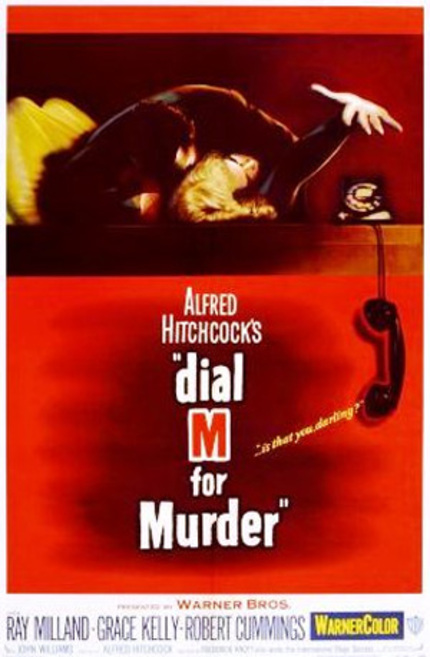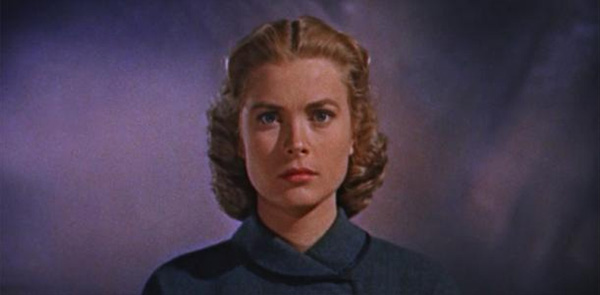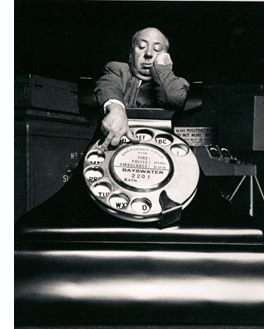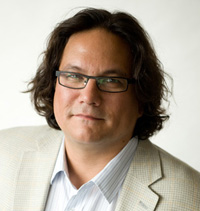Sixty Years On, DIAL M FOR MURDER in 3D Continues to Stand Out

Dial M For Murder is one of the "footnote" films in Alfred Hitchcock's canon, often remembered far more vividly for its technical elements than as a standalone piece. Like Lifeboat it essentially takes place in one location, and like Rope (besides also being one location) Dial M is noted for its particular cinematic quirk. For Rope, it was the fact that the film is shot in what appears on first blush to be a single continuous take, and with Dial M, it's that the images were captured for 3D presentation.
There are a number of other firsts (and lasts!) associated with this film, including the appearance of a certain iconic actress. While her role in what's arguably Hitch's masterpiece, Rear Window, is even more celebrated, Grace Kelly's first turn as a Hitchcock blonde manages to suffuse Dial M with much of its charm. Kelly's star would shine brightly for three Hitch's in a row (To Catch a Thief providing a charming end to the trinity), and she soon would give way to a number of fine actresses who never could quite capture the regal nature of the stunning performer.
Dial M, like Rope and several other Hitchcock films before and after it, doesn't shy away from its theatrical roots. If there's an initial criticism to be laid, it may be said that many of the scenes play as "stagy," slightly stilted versions reminiscent of melodramatic theatre performances. It's at times as if everyone is speaking in soliloquy, working aloud their character's motivations for the sake of an audience seemingly oblivious to subtle elements of action. It's not quite as egregious as, say, the lunatic ranting external monologues of The Seven Year Itch, but at times it feels close.
Hitchcock's films always seemed to have trouble ending (Psycho being a fine example of a film just slightly overstaying its welcome), and Dial M is hardly an exception to that tendency. Once the sting is revealed, we're left just a little too long lingering on what's inevitably going to transpire, a brief moment where after the tension is deflated we watch as the story putters to a quiet end.

These minor elements, it must be said, do very little to interfere with the enjoyment of the film. For at its heart, this is a Hitchcock film, made at the height of the director's powers, and that fact speaks enormously to the charm of the work. When the movie is firing on all cylinders, it's a thing to behold: Icy stares, uncomfortable tension, sly turns of plot and character undercut by jet-black humour are the hallmarks of this man dubbed the "master of suspense," and these facets are well on display here.
We're treated with the plot to a "perfect murder," which, obviously, doesn't quite go according to plan. Still, it's in the beautifully self-aware banter that we see perhaps most vividly the tongue-in-cheek nature of the director. Like Penn and Teller would do decades later, Hitch is a performer who can lay bare the tricks of his trade and still find a way for his audience to believe in magic.
Finally, there's the use of 3D in the film, something that
Hitch was apparently quite ambivalent about. This cinematographic tool,
which was the basis for a short lived 3D fad in the 50s due to bulky cameras
and limited results from a projection standpoint, is yet another device he
seems to easily master. It did require some amusing work-arounds, including
giant phones to be dialed by a plaster finger on a stick, but when the action
calls for it, the dimensionality is extremely effective at bringing the
audience into the story, or even, in certain shots, bringing the action out to
the audience!
 In preparing this article, I had planned on some grand
delving into Hitchcock's own view on the film, tracing it back to his interviews
with Truffaut and other highfalutin references. In doing my initial research I found
that Kristin Thompson and David Bordwell had conveniently already written
the article I had planned to write for me only a few weeks ago, saving me
from the bother.
In preparing this article, I had planned on some grand
delving into Hitchcock's own view on the film, tracing it back to his interviews
with Truffaut and other highfalutin references. In doing my initial research I found
that Kristin Thompson and David Bordwell had conveniently already written
the article I had planned to write for me only a few weeks ago, saving me
from the bother.
Bordwell was actually in town a few weeks back, brought in by the Toronto festival to premiere the restoration. The companion article linked above covers pretty much everything you'd like to know about the reaction Hitch had to the film, and includes this fantastic photo of the man caressing the giant phone used for the film's iconic, titular scene.
Warner has spent several years getting the film restored properly, no easy feat given the intricacies of doing essentially twin restorations. I had a chance to see a vintage print projected upon a silver screen a decade or so back, and the image was pretty atrocious, the colours skewed towards yellow, marks and scratched abounded throughout. Still, you could tell even in that compromised screening that Hitch was having fun with dimensional filmmaking, and no other screening of that film in 2D has had quite the same impact.
The results of this newest, digital cleanup are a mixed bag, but are certainly the best this film will ever look, and likely better than it looked when first projected in the 50s. The image is rock solid and steady, the colours accurate and well served even with the change in luminance due to polarized glasses. I've heard from those that have the 3D Blu-ray already and there have been complaints that the image is slightly too dark on calibrated equipment - at the fine venue of the Lightbox I did not encounter this issue at all.
There are some shots where the technical limitations of shooting in the early 50s, including rear projection backgrounds, stand out even more on a 3D canvas. There are also some instances of haloing, where a slightly brighter line of contrast surrounds strongly coloured characters when set against a bright background. Often these elements are written off as "edge enhancement," but given the grain structure that's evident throughout, and the care with which Warner treats their classics, this is a false conclusion.
One thing that could account for these minor aberrations is the nature of the 3D process itself - as the twin negatives are combined to create the 3D image, there are sometimes slightly different levels of shrinkage in the various layers on the negative, which could exacerbate contrast when assembled into a 3D image. The fact that we can concentrate on these minor elements, seeing as the presentation is free from the scratches, hairs, pock marks, cue holes, colour distortions and mangled frames that no doubt beset the restoration team when assembling this digital master, is testament to the remarkable work done by Warners' restoration team.
The short version is that given all the inherent issues that are baked into this film, the restoration truly looks quite amazing. It's absolutely a must-see in 3D, ideally with an eager audience. The film is so much fun, the 3D imagery such an integral part of the way that Hitch composed the film, that it'd be a shame to miss out.
Thanks to new digital techniques of projection we've of course seen a renaissance of 3D. Suffering through the Avatars and Step Up 3Ds of this world, the title I was most looking forward to being resurrected on big screen was Dial M. My years of waiting for this to show up at a local theatre have paid off, in part thanks to the work of those at TIFF's Bell Lightbox.
 I asked Jesse Wente, Head of Film Programmes at Lightbox,
about his feelings for the film and the role that he and his team played in
bringing it to the big screen.
I asked Jesse Wente, Head of Film Programmes at Lightbox,
about his feelings for the film and the role that he and his team played in
bringing it to the big screen.
ScreenAnarchy: Can you tell me about the first time you saw DIAL M?
Jesse: I actually can't remember. Would have been on TV though - maybe Saturday Night at the Movies.
Had you seen it in 3D before? How do you think the film plays differently versus the 2D presentation?
I hadn't seen it in 3D until the festival screening this year. The movie came alive for me in 3D - the restoration helps too of course - but I found the use of 3D rather ingenious, and done in a way that was sophisticated at the time and even now.
Is there a particular sequence that stands out for you?
The scissors obviously, quite literally, stand out at you.
What I ultimately found more fascinating was how Hitch used 3D to deepen the frame, placing objects in front of the characters.
If I had to pick one sequence it would actually be the key reveal near the end. The way the key now looms out at the audience, hovering there, is magic - as if implicating the audience in the murder, making it impossible to distance ourselves from the idea of a murder plot as entertainment. It's one of the few moments Hitchcock really uses the 3D to invade the viewer's space, and as such it's remarkably effective.
Where do you place the film in Hitch's pantheon of films?
Many describe this as minor Hitchcock, but viewing this reminds me that there really isn't any "minor" Hitchcock. It's so exactingly executed, so meticulous, that there ends up being nothing minor about it.
While the film doesn't reside in the rarified space of some of his other classics, I think it's still the work of a great master, and as a 3D movie, it has to rank as one of the best ever made.
What is your personal view about 3D in general?
3D is a cinematic tool that can, when used by master artists, alter and even elevate the traditional cinema-going experience.
Isn't it interesting that the most effective modern 3D - at least in my mind - has come with documentaries, transporting us to places spatially in a way they couldn't in 2D.
3D is a commercial technology that is artful in the hands of artists, it's an unsubtle technology that is best used subtly and Dial M is further proof.
Can you please detail the work that TIFF/Lightbox did with Warner to get a theatrical version of DIAL M together? What is the nature of this collaboration, and can we expect future instances of such collaboration?
TIFF approached Warner Brothers about a year ago and expressed our interest in seeing this restoration - which they were already underway on for the Blu-Ray release - have a theatrical life. We worked with them to make that happen and to have its premiere at the Festival and we are thrilled with the results.
We are in constant dialogue with Warners and all the other studios about their classic titles and we are hoping to be able to bring audiences more projects like these in the future.
Were there specific challenges that needed to be overcome to take a restoration meant for home viewing and project it at a theatrical venue (say, adjusting luminance for projected image with passive glasses)?
Yes, there's a host of technical issues in taking what was meant to be a non-theatrical restoration and turning it into a big-screen experience. The 3D adds another new layer on top of that.
Warner Brothers has done an amazing job in using the latest technology to restore Dial M to its original glory and format.
How would you rate the restoration compared to other recently restored classics (Hitch or otherwise)?
Between Jaws this summer, Stromboli and Cloud Capped Star at the Festival and now Dial M, I think we've seen a host of terrific digital restorations.
I think we're finally seeing just how the latest digital tools can help preserve cinema history and allow audiences access to the greatest movies even in a rapidly evolving theatrical landscape.
What is your dream classic film restoration (3D or otherwise), and why?
Star Wars restored to have Greedo shoot first again!
All kidding aside, the list is far too long for publication, but we're working on it one movie at a time.
Dial M for Murder opens at The Bell
Lightbox in Toronto on Friday, October 5.







